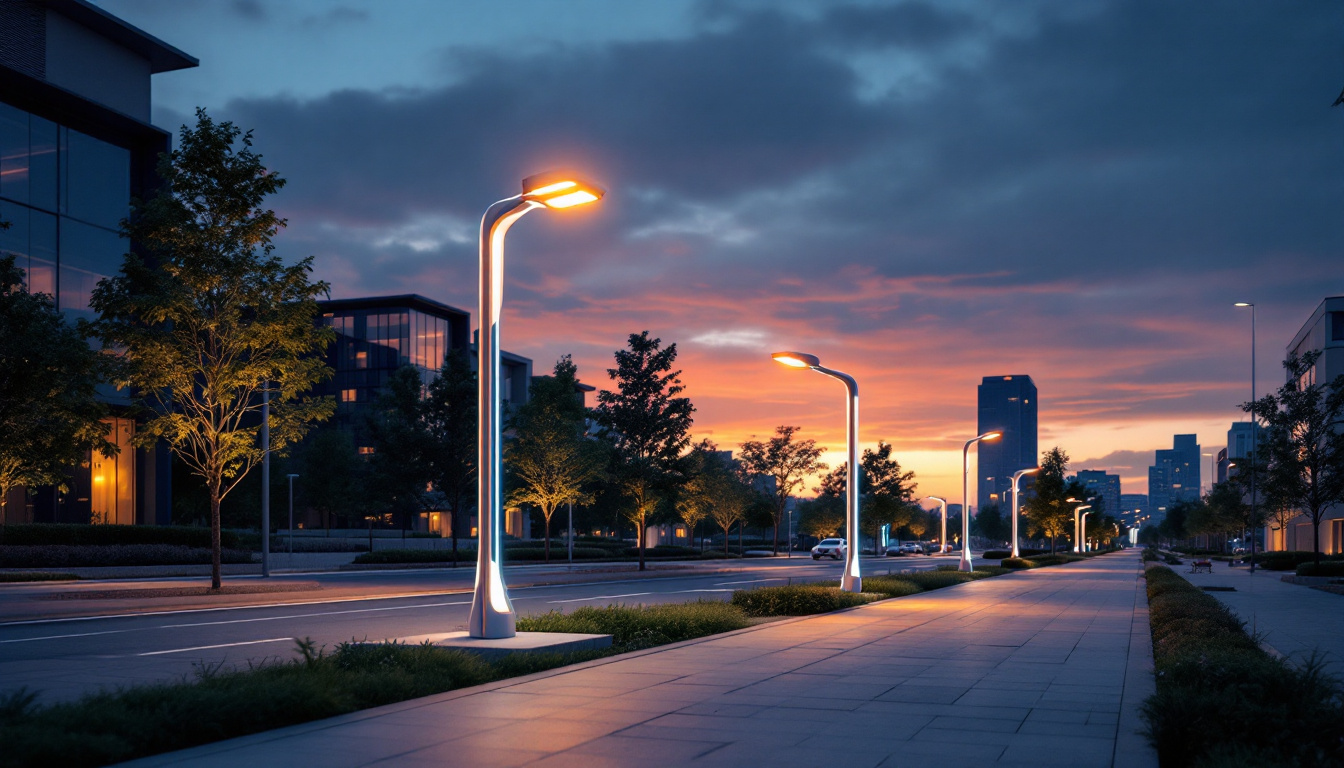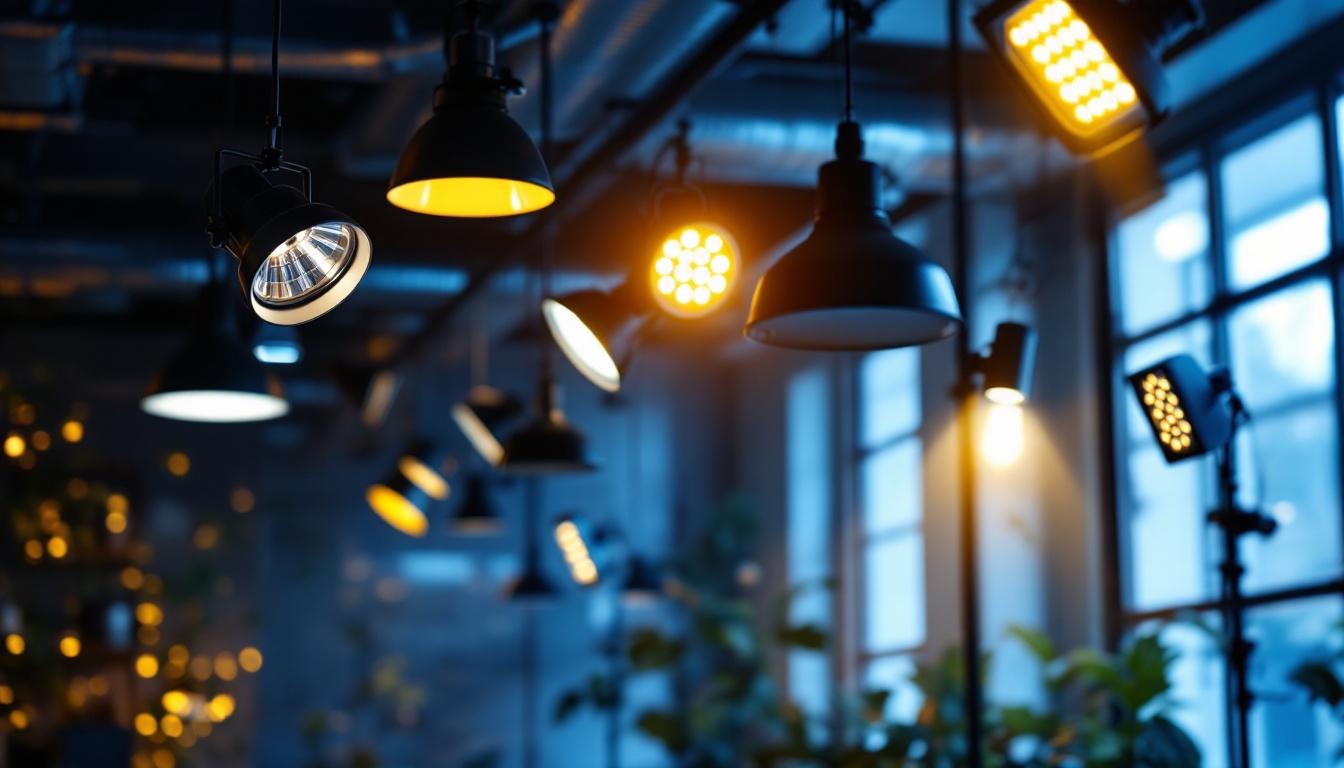
In the ever-evolving landscape of urban development and infrastructure, lighting plays a pivotal role in enhancing safety, aesthetics, and functionality. As cities grow and technology advances, the demand for innovative lighting solutions has surged. This article explores the future of lighting design and installation, focusing on the latest trends in light poles and their impact on urban environments.
Light poles have come a long way from their humble beginnings as simple structures designed to hold incandescent bulbs. Today, they are sophisticated installations that integrate advanced technology and design principles. The evolution of light poles reflects broader changes in urban planning, sustainability, and energy efficiency.
Historically, light poles were primarily functional, serving the basic need for illumination. However, as cities expanded and populations grew, the role of lighting transformed. The introduction of electric lighting in the late 19th century marked a significant turning point, leading to the development of more elaborate designs and materials.
With the advent of modern materials like aluminum and fiberglass, light poles became not only more durable but also more aesthetically pleasing. This shift allowed for greater creativity in design, enabling cities to incorporate lighting that complements their architectural styles and urban landscapes. For instance, in many historic districts, light poles have been designed to reflect the character of the area, often featuring ornate details that echo the architectural motifs of nearby buildings. This blend of functionality and artistry has helped to create a cohesive urban environment, enhancing the overall experience for residents and visitors alike.
Today, technology plays a crucial role in the functionality of light poles. The integration of LED technology has revolutionized the lighting industry, offering energy-efficient solutions that significantly reduce electricity consumption. LEDs also have a longer lifespan compared to traditional bulbs, which translates to lower maintenance costs for municipalities and contractors alike.
Moreover, smart lighting systems are becoming increasingly prevalent. These systems utilize sensors and IoT (Internet of Things) technology to adjust brightness based on ambient light levels or pedestrian traffic. This not only enhances safety but also contributes to energy savings, making smart light poles a compelling choice for modern urban environments. Additionally, the ability to monitor and control lighting remotely allows city planners to respond quickly to changing conditions, such as increasing light levels during special events or reducing brightness in less-trafficked areas during late-night hours. As cities continue to embrace sustainability and technological innovation, the future of light poles promises to be even more dynamic, with potential integrations such as solar panels and data collection capabilities that could further enhance urban living. The ongoing evolution of these structures is a testament to the intersection of functionality, design, and technology in our ever-changing urban landscapes.
As the demand for innovative lighting solutions grows, several trends are shaping the future of light pole design. Understanding these trends is essential for lighting contractors looking to stay ahead in a competitive market.
With a growing emphasis on sustainability, many municipalities are prioritizing eco-friendly lighting solutions. This includes the use of solar-powered light poles, which harness renewable energy to provide illumination. Solar light poles are particularly advantageous in remote areas or locations where extending electrical infrastructure is impractical.
Additionally, manufacturers are increasingly using recycled materials in the production of light poles. This not only reduces environmental impact but also appeals to communities looking to promote sustainability. Contractors who embrace these eco-friendly designs can position themselves as leaders in the industry, catering to the needs of environmentally conscious clients. Furthermore, energy-efficient LED lighting is becoming the standard, as it significantly lowers energy consumption and maintenance costs, allowing cities to allocate resources to other critical areas.
The concept of smart cities is gaining traction, and lighting plays a crucial role in this vision. Light poles equipped with sensors can collect data on traffic patterns, weather conditions, and even air quality. This data can be invaluable for city planners and emergency services, enabling them to make informed decisions that enhance urban living.
Moreover, integrating light poles with other smart city technologies, such as surveillance cameras and Wi-Fi hotspots, creates multifunctional infrastructure that maximizes the utility of public spaces. Lighting contractors who understand how to implement these technologies will be well-positioned to meet the demands of modern urban development. Additionally, the incorporation of adaptive lighting systems, which adjust brightness based on pedestrian and vehicular traffic, not only improves safety but also contributes to energy conservation by reducing light output when areas are unoccupied.
When selecting light poles for a project, several design considerations must be taken into account. These factors influence not only the aesthetic appeal but also the functionality and longevity of the installation.
The height of light poles is a critical consideration, as it affects the distribution of light and overall visibility. Taller poles may be necessary for larger areas, such as parking lots or roadways, while shorter poles can be more appropriate for pedestrian pathways or parks. Understanding the specific needs of each environment is essential for achieving optimal lighting outcomes.
Additionally, the scale of the light pole should complement the surrounding architecture. A well-designed light pole can enhance the visual appeal of a space, while a poorly scaled pole may detract from the overall aesthetic. Contractors should work closely with architects and urban planners to ensure a cohesive design approach. Furthermore, the integration of smart lighting technology into the design can provide added functionality, allowing for adaptive lighting based on time of day or pedestrian traffic, which can further enhance safety and energy efficiency.
The choice of materials for light poles can significantly impact their durability and maintenance requirements. Common materials include aluminum, steel, and fiberglass, each offering distinct advantages and disadvantages. For instance, aluminum is lightweight and resistant to corrosion, making it an excellent choice for coastal areas. On the other hand, steel provides strength and stability but may require additional coatings to prevent rust.
Contractors should also consider the environmental impact of their material choices. Opting for recycled or sustainably sourced materials can enhance the project’s eco-friendliness and appeal to clients who prioritize sustainability. Moreover, the finish of the materials can affect not only the durability but also the visual impact of the light poles. Powder coating, for example, can provide a vibrant color palette while also offering protection against the elements, ensuring that the poles remain visually appealing over time. Additionally, incorporating features such as integrated solar panels or LED lighting can further enhance energy efficiency and reduce the overall carbon footprint of the installation.
Proper installation of light poles is crucial for ensuring their longevity and effectiveness. Contractors must adhere to best practices to achieve optimal results and minimize potential issues.
Before installation, a thorough site assessment is essential. This includes evaluating the terrain, existing infrastructure, and potential obstacles that may affect the placement of light poles. Understanding the site’s unique characteristics allows contractors to make informed decisions about pole placement and spacing.
Additionally, considering factors such as soil type and drainage is vital for ensuring stability. In some cases, it may be necessary to conduct soil tests to determine the best foundation for the light poles.
Lighting contractors must be aware of local regulations and codes governing the installation of light poles. Compliance with these regulations is not only essential for safety but also for avoiding potential legal issues down the line. This includes adhering to guidelines related to height, spacing, and energy efficiency.
Staying informed about changes in regulations and industry standards is crucial for contractors looking to maintain a competitive edge. Engaging with local authorities and industry associations can provide valuable insights and updates.
The lighting industry is on the brink of significant innovations that promise to reshape the way light poles are designed and utilized. As technology continues to advance, lighting contractors must remain adaptable and open to new possibilities.
Adaptive lighting systems are emerging as a groundbreaking innovation in the field of lighting design. These systems utilize advanced algorithms and machine learning to adjust lighting levels based on real-time data. For example, lights can dim during low-traffic hours and brighten during peak times, optimizing energy usage while enhancing safety.
Such systems not only contribute to energy efficiency but also improve the user experience by providing appropriate lighting levels based on specific needs. Contractors who invest in understanding and implementing adaptive lighting technologies will be at the forefront of the industry.
The integration of light poles with renewable energy sources is another promising trend. As solar technology continues to improve, the feasibility of solar-powered light poles becomes more attractive for urban environments. Additionally, the potential for wind turbines or kinetic energy systems to power lighting solutions presents exciting opportunities for innovation.
By harnessing renewable energy, contractors can offer sustainable solutions that align with the growing demand for eco-friendly infrastructure. This not only meets client expectations but also contributes to broader environmental goals.
The future of lighting design and installation is bright, with light poles playing a central role in shaping urban environments. As technology advances and sustainability becomes a priority, lighting contractors must stay informed about emerging trends and innovations.
By embracing eco-friendly designs, integrating smart technologies, and adhering to best practices in installation, contractors can position themselves as leaders in the industry. The journey towards a more illuminated and sustainable future begins with the choices made today in lighting design and installation.
Ready to lead the way in the future of lighting design and installation? At LumenWholesale, we provide lighting contractors with the innovative solutions needed to stay ahead of the curve. Our spec-grade lighting products not only meet the highest industry standards but also come at unbeatable wholesale prices. Say goodbye to inflated markups and hello to a vast selection of reliable, high-performance lighting that will brighten any urban environment. With the convenience of free shipping and bulk buying, LumenWholesale is your go-to source for premium lighting without the premium price tag. Elevate your lighting projects by choosing Wholesale Lighting at the Best Value today.

Discover the essential guide to light bulb base measurements that every lighting contractor should master.

Illuminate your projects with precision using our essential checklist for front-of-house lighting.

Discover essential strategies and expert insights for lighting contractors in “Phoenix Lighting: Mastering Tips for Lighting Contractors.” Elevate your projects with innovative techniques and industry secrets to enhance every lighting installation..

Discover essential tips and strategies to steer clear of expensive errors in your lighting projects.